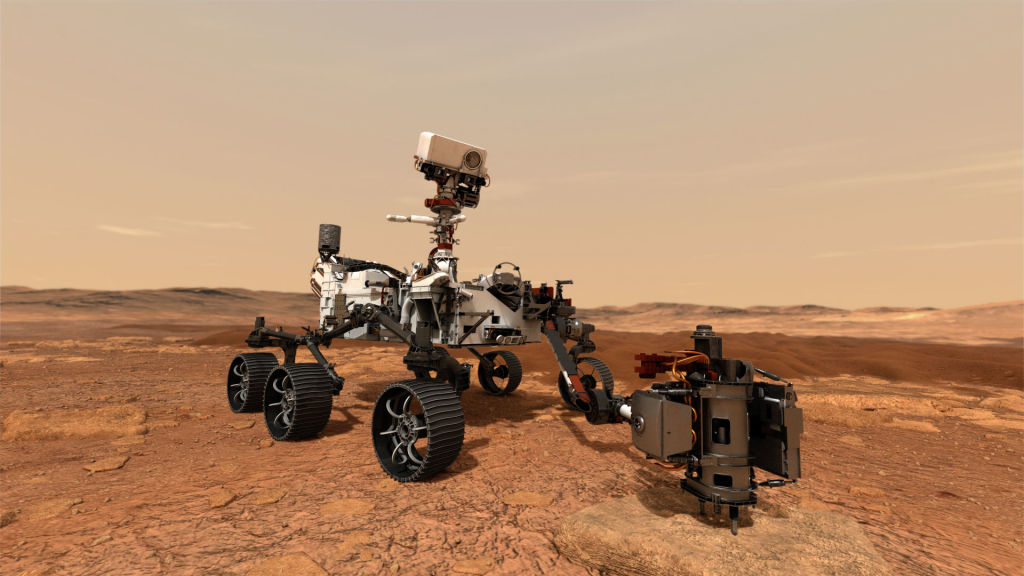The National Aeronautics and Space Administration (NASA) recently released photos and videos of Mars, and it is breathtaking.
The recently released 360-degree panorama photo and 360-degree video of the Red Planet were captured by the Perseverance Rover's Mastcam-Z stereo imaging system.
Mastcam-Z Stereo Imaging System
The Mastcam-Z is the name of the mast-mounted camera system found on the Perseverance rover, NASA said.
The camera is equipped with a zoom function that allows for zoomed-in shots. It can also focus and take 3D pictures and videos at a high speed to allow detailed examination of objects from any distance.
The Mastcam-Z is mounted on the rover mast at the eye level of a 6.5-foot-tall person, NASA added. To provide stereo vision, the cameras are separated by 9.5 inches. It weighs about 8.8 pounds.
Its main job is to take high-definition video, panoramic color, and 3D images of the Martian surface and features in the Red Planet's atmosphere. It does this with a zoom lens to magnify distant targets.
The data return of the system is approximately 148 megabits per sol on average. The color quality is similar to that of a consumer digital camera at around 2-megapixels.
As for the image size, it can go up to a maximum of 1,600 by 1,200 pixels. The resolution of the images is between about 150 microns per pixel (0.0059 inch) to 7.4 millimeters (0.3 inches) per pixel depending on the distance, NASA explains.
#NASAPersevere
— Der Klangwandler (Andres Staeubli) (@klangwandler) June 9, 2021
The #Mars rover #Perseverance explores rocks that no human has ever seen before.
Mars Perseverance Sol 107: Right Mastcam-Z Camera pic.twitter.com/H0fYtYliGl
Things to Know About the Mastcam-Z Stereo Imaging System
1. Picking the "best" rocks
According to NASA, the Mastcam-Z's "eyesight" helps scientists zoom in on rocks that might preserve signs of past life. It tells scientists which rocks to core, cache, and even return to Earth someday.
2. Hunting places for signs of life
The system helps scientists understand the terrain around the Perseverance Rover. Images of the rock and soil textures could clue in scientists if Mars could have supported tiny life forms long ago.
3. Looking for signs of water
Where there is water, there is life. Scientists use the Mastcam-Z to find signs of ancient lakes, streams, and other water-related features.
4. Sharp Vision
NASA said the Mastcam-Z's zoom is so powerful that it can essentially see features as small as a housefly all the way from a distance that's about the length of a soccer field. That more than 100 yards!
5. All-Seeing
The Mascam-Z can show scientists the entire scene around the rover. It can gather images around in a full 360-degree circle and a full 180 degrees from straight down to straight up. NASA also notes that it "sees" in color and 3D or stereo.
NASA Mars Pictures and Video: 360-Degree Panorama
The 360-degree view of the Red Planet was at the "Van Zyl Overlook" where the rover was parked for 13 days while the Ingenuity helicopter performed the first flights of its mission, Mashable said.
The details of the image are astounding, with 2.4-billion-pixels. The panorama is made up of 992 individual right-eye Mascam-Z images stitched together--all of which were taken between April 15 and April 26, or the 53rd and 64th Martian days or sols of the mission.
To fill a few small gaps where patches of near-field sand were covered by parts of Perseverance when the right-eye camera images were taken, the same sandy patches captured by the left-eye of the Mastxam-Z were used.
NASA also explained that the imaging coverage of the sky has been digitally smoothed and expanded to match the actual color observed as the panorama was being acquired on Mars.
You can zoom in to a particular area on the image if you want to take a closer look. The video also allow you to use the arrows in the top left or click and drag your cursor to move the view up or down and left or right.
The images can be downloaded and viewed on NASA's Mars Exploration Program website.
Related Article: NASA Mars Rover Helicopter: Where to Track Ingenuity Location After Latest Flight on Red Planet











